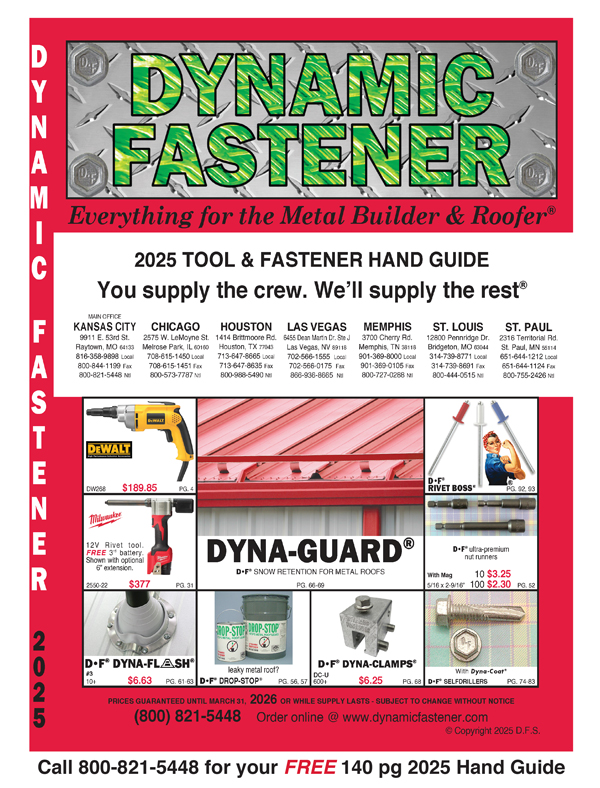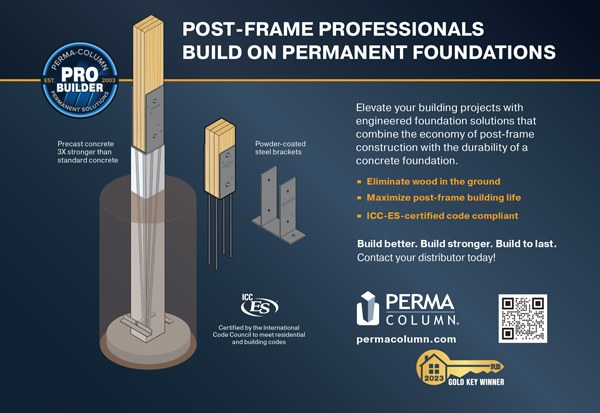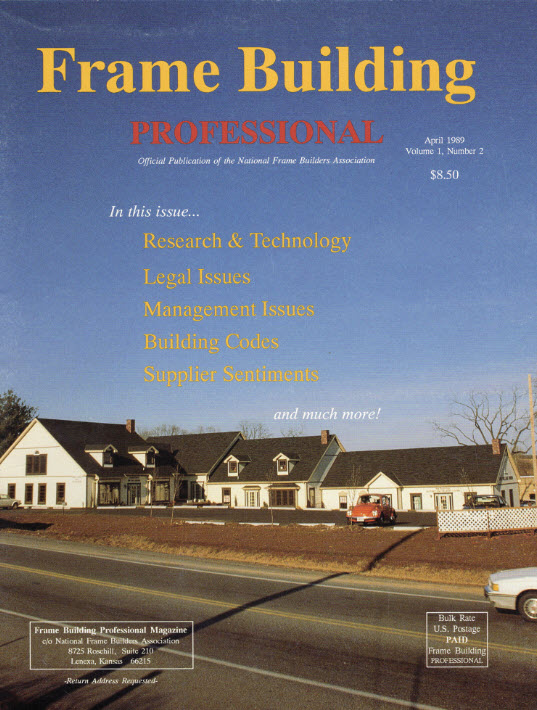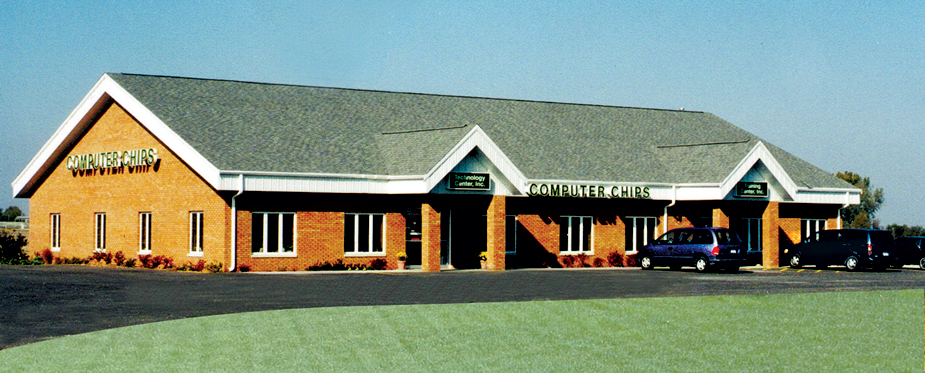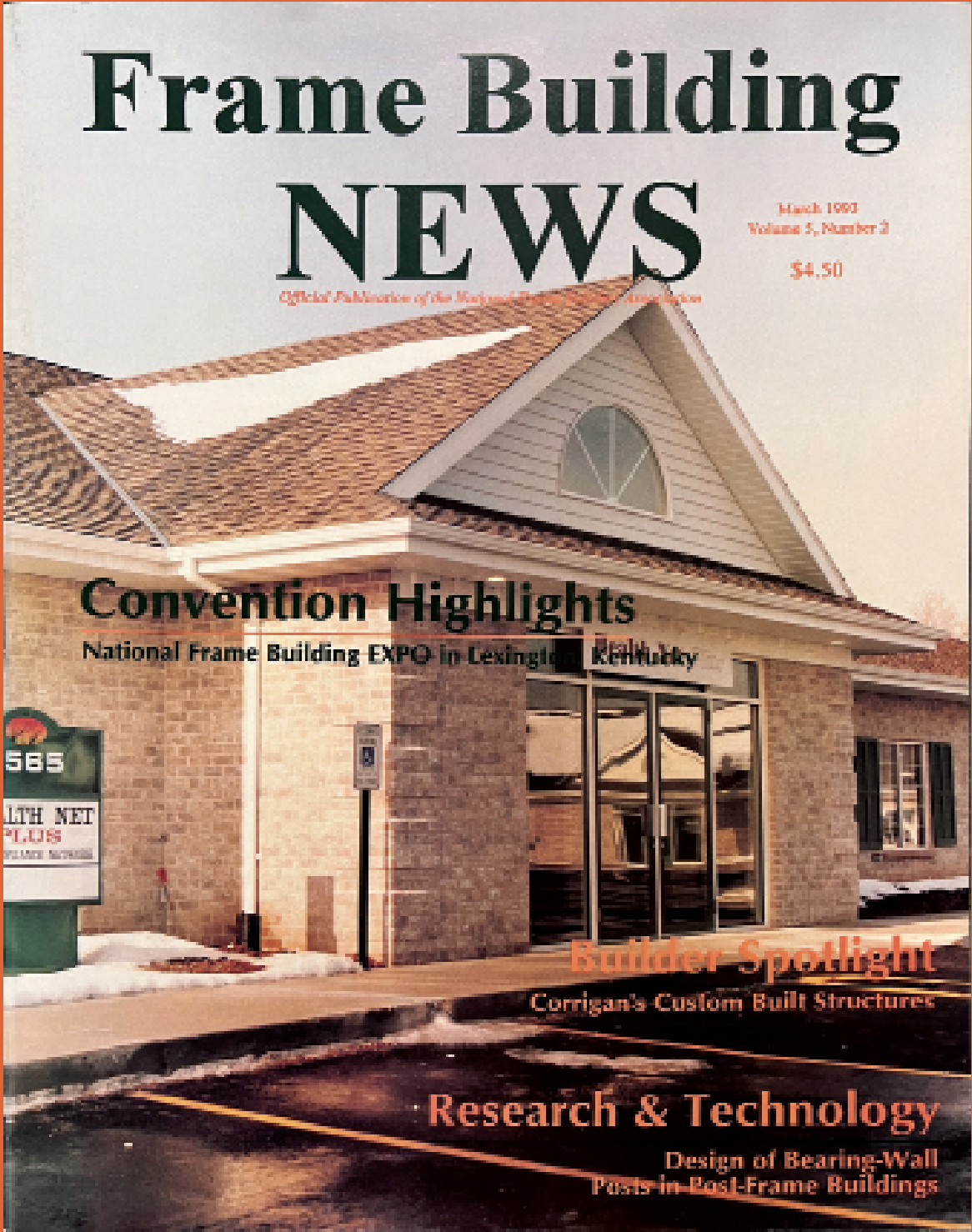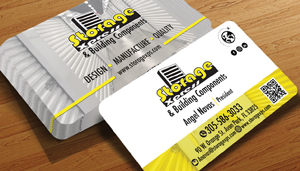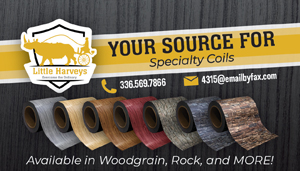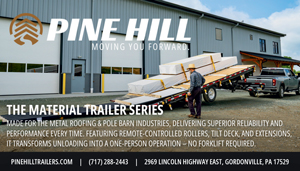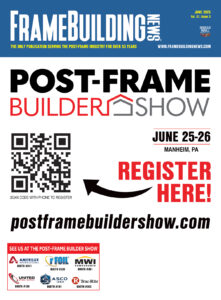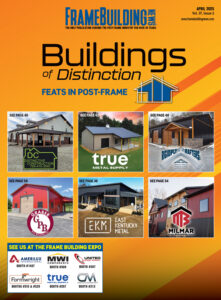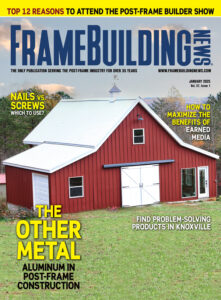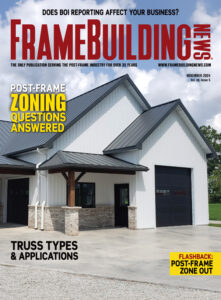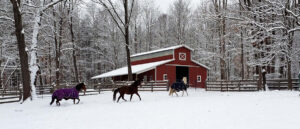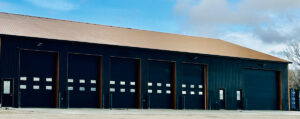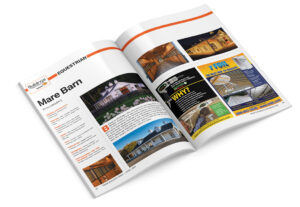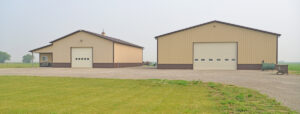Editor’s Note: For 30+ Years Frame Building News has been providing the news, trends and resources builders need. If you have a post-frame project on a historic building, we’d love to see it, and share it with our readers!
Post-frame industry debates fastener choices.
Screws and nails. Nails and screws. Post-frame buildings have long enjoyed the option of two distinct products available for fastening metal panels to their wood-frame structures. Conversations with builders and fastener manufacturers indicate that screws have emerged as the fastener of choice in this building application.
“We still sell a few nails, but most of the market has gone to screws for attaching panels,” says Joe Stager of Triangle Fastener.
One big builder embodies this trend. Cleary Building Corp., long a proponent of using nails, in April began using galvanized screw fasteners color matched to sidewall panels on its buildings. Cleary continues to use nails to fasten roof panels, but in a release to its customers the company says it “recognizes that the industry is changing and we are seeing a progression to screw fasteners in the marketplace.”
Even so, many builders still prefer nails, and the old standby has retained a loyal following. “The market has gone to screws, but because nails are more economical, they are still holding their own,” says Kim Pohl of Maze Nails. “We realize the industry has migrated to screws, but we still sell a lot of our rubber washer nails — it’s not a growing business, but we’ve maintained.”
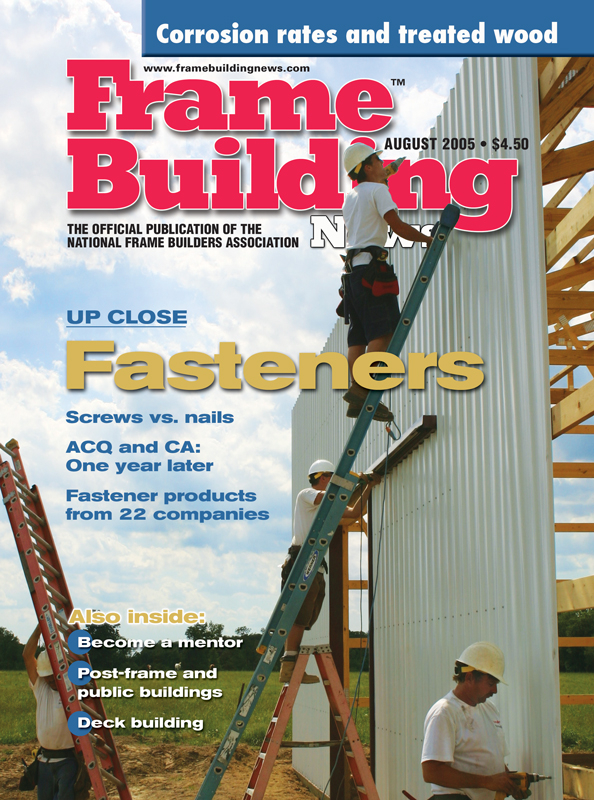
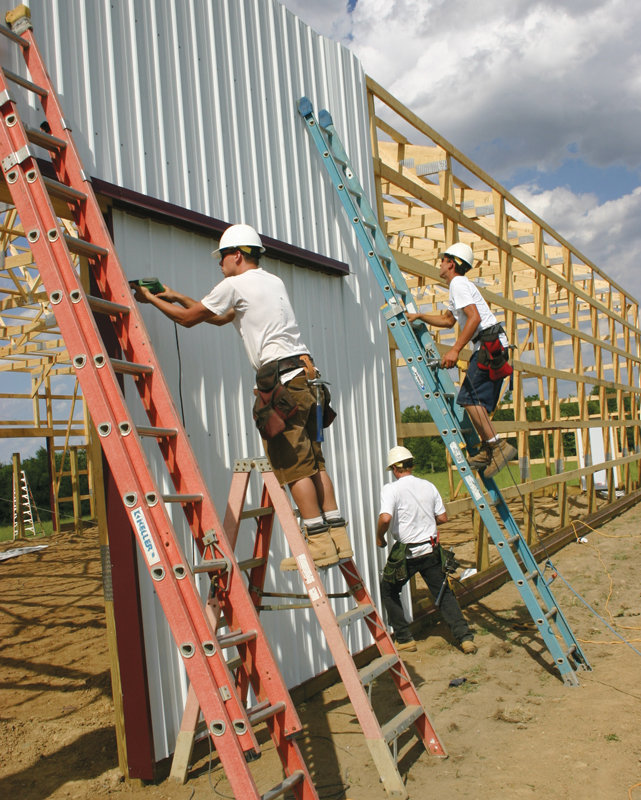
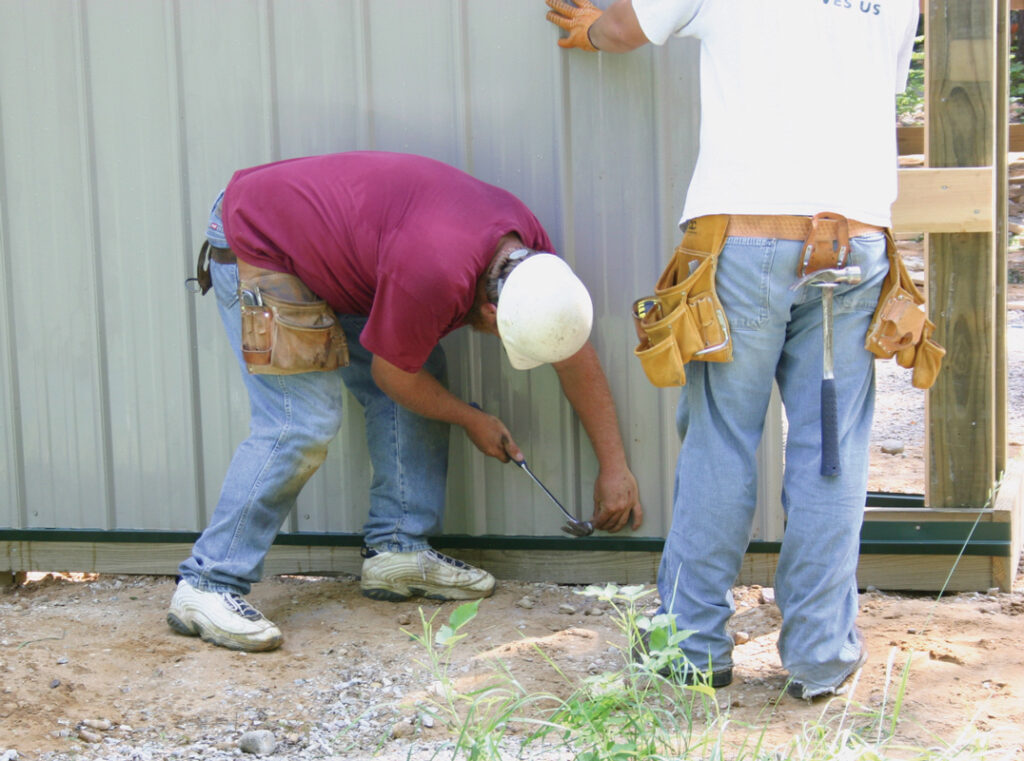
If you are new to the business, or just trying to decide whether to use nails or screws — or both — on your post-frame projects, consider the following:
Installation
Some builders and manufacturers claim screws are easier to install, and vice versa. Jay Levy of Ideal Building Fasteners says neither should pose a problem to an experienced crew. “If the crew is trained properly, the fasteners will be installed properly,” he says. “If you put a guy up on a roof with a hammer on his first day, he’s going to do more damage than a guy who’s been doing it for 10 years. It comes down to putting a guy on the job who has some expertise.”
Each has its advantages. Dave Webster of Leland Industries notes that screw guns have reduced operator training time and reduced fatigue, allowing for more consistent, damage-free fastening. Ken Webb of Dynamic Fastener says drill time for his company’s fasteners is fast, 1.5 seconds per installation, and says, “there’s a good chance of damaging the panel when installing nails with a hammer.” Levy says that because of screw guns’ nosepieces that prevent overdriving, it is easier to train people to run screws than to hammer nails.
Stuart Deniston of Deniston Company says that he advises builders using screw fasteners on a roof to position them in the flats of metal panels, as opposed to installing nails through the high rib. “With a nail, you can control the last hit, but with the fastener, the gun can overdrive it and dimple the metal,” he says, “If the dimple is on the rib, that’s a potential problem.”
Maze’s Tom Koch says that in some rural building locations, good access to electricity is difficult, and a small generator might not be enough to run a screw gun. “Using nails, all you need is a hammer,” he says. Koch says that while a screw gun is easier on an installer’s arm, “A good man with hammer and nails would outperform a man with screws.”
Cost
Determining a standard cost difference between nails and screws is impossible, given the differences in lengths, base metals, coatings, etc. Levy estimates screws cost about 20 percent more than nails, “which from our standpoint is not much,” he says, “but 20 percent is 20 percent.”
Everyone agrees nails are a more economical option than screws, but are a building’s fasteners the best place to watch costs? It depends on the application, says Deniston. “If you’re building chicken barns in Arkansas, you might want cheaper fasteners, but if you’re building horse barns in Kentucky, then you want something that will hold up really well,” he says.
Stager links post-frame’s migration from nails to screws with its evolution from primarily agricultural buildings to more visible structures. “This isn’t to say anything bad about it, but it used to be that metal panels were used to keep hogs dry,” he says. “Now the metal panels are being used more in residential and commercial applications than in the past. A couple leaks aren’t a big deal when you’re covering hogs, but it’s different where the panels are used today.”
Pullout values
“Screws tie the building together tighter over a longer period of time and provide better building diaphragm dynamics,” says Larry Harsila of Trufast.
Testing backs up these claims. Results provided by Triangle Fastener show that depending on the type of wood being penetrated, screws have two to three times more pull-out strength than nails. Across four types of wood, nails had a pullout value of about 400 pounds, compared to 1,200 pounds for screws in yellow pine, 1,100 pounds for screws in oak, and 800 pounds for screws in white fir.
“That’s not to say 400 pounds isn’t enough, just that screws will give you more pullout strength,” says Stager. “If you’re happy driving a Chevrolet, why buy a Cadillac?”
Pohl says Maze and one of its customers conducted similar testing, with less disparate results: the average withdrawal value of Maze nails driven to a depth of 1-1/4 inches into Southern Yellow Pine was about 600 pounds, while screws driven to a depth of 1 inch averaged about 800 pounds of withdrawal strength. “There was some more holding power with the screw, with the nature of how a screw works, but not that much more,” Pohl says.
Says Deniston: “Screw fasteners have better pullout values, but I wouldn’t call it a big difference.”
Aesthetics
While a fastener’s structural properties are its most important traits, looks are important, too. Just as more importance is being placed on metal panels’ coatings, post-frame fasteners are being counted on to retain their color-matched appearance for longer periods of time.
Webb touts Dynamic’s in-house painting operation, and says the company’s color-matched screws will hold up over time. “No need to be concerned about paint chipping off the heads of screws when installing with a screw gun,” he says. “Painted nails’ heads can chip when installed with a hammer.”
Maze also manufactures painted nails to match roofing and siding colors, and Pohl says the nails’ heads are checkered to hold the paint when hammered.
Leak protection
Manufacturers selling screws unanimously say that screws are better at preventing leaks in a post-frame building than nails. “Screws provide a much stronger, positive weather seal than nails when attaching metal panels to wood framing members,” says Cindy Weaver of SFS intec.
Maze’s Pohl disagrees, and says nails hold their own. “Over the years, many of our customers have found that leaking complaints come up no more often whether nails or screws are used,” she says.
Fasteners employ a rubber washer to help prevent leaks. Proper installation is key here; certain nails and screws are more forgiving than others when not driven at a 90-degree angle to the panel.
Using both
Like Cleary, there are builders who will mix and match screws and nails in a single building. It is not altogether uncommon to see screws used on a roof and nails in a sidewall.
“We always recommend screwing down the roof — that’s where leaks can occur, because there’s a lot of snow and rain, and it’s not a vertical situation,” says Levy. “On sidewalls, that’s more of a contractor’s choice, an owner’s choice. There’s very little likelihood of a leak on a sidewall. Even if nails pop or back out over time, there’s no standing water, and the likelihood of a leak on a vertical surface is almost nil.
“I can’t not recommend nails on a sidewall. Screws hold better, but there’s nothing wrong with using nails on a sidewall, especially matching panels with a painted nail, it makes for a flat surface.”


